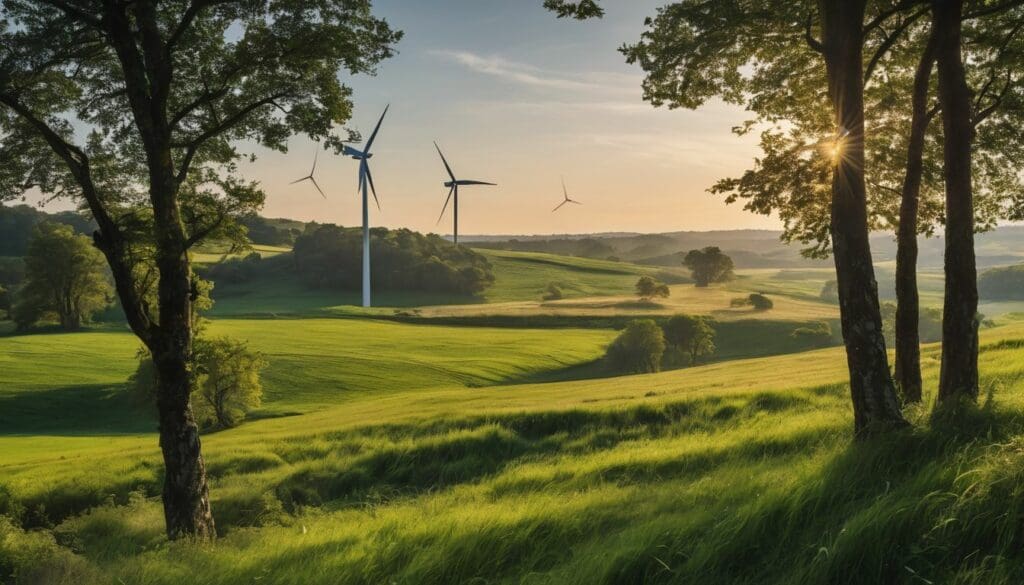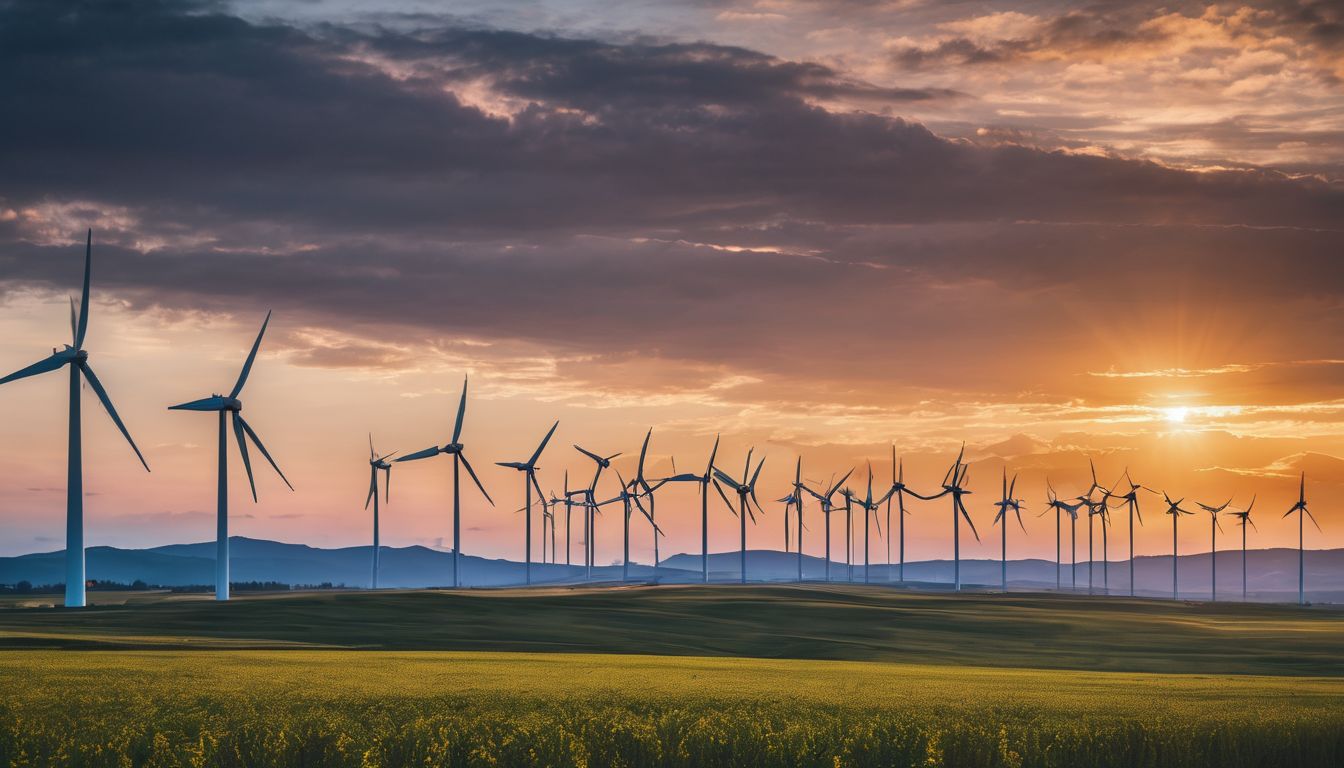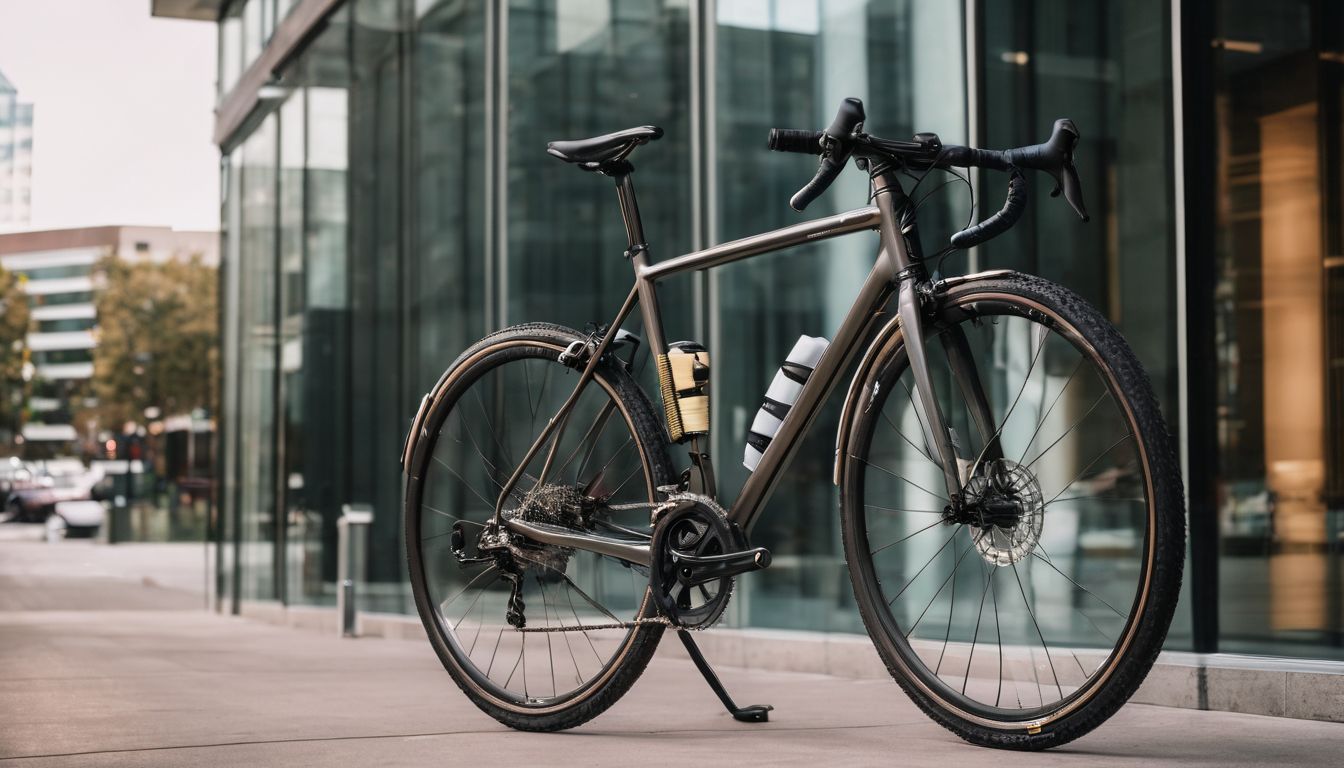Harnessing clean energy for our community’s future can often seem like a Herculean task, can’t it? We completely understand; we’ve faced the same obstacles and frustrations. That’s exactly why we’re equipped with thorough research and pragmatic steps to support you on this journey.
In this article, we’re going to illuminate the path towards setting up your own Community Renewable Energy Project – taking you from the spark of an idea to a fully energised reality.
So come along, let’s join hands and empower change together!
Key Takeaways
- A Renewable Energy Community (REC) harnesses clean power sources like solar, wind, and biomass to create sustainable energy for local use, strengthening community bonds.
- Setting up an REC involves defining goals, conducting resource studies, engaging stakeholders, determining financial models, signing contracts with suppliers, installing energy assets and monitoring their performance.
- Financial strategies for RECs range from community shares and grants to loans and business partnerships; careful budgeting ensures sustainability.
- Engaging the community through education and involvement is key; it builds project support and encourages long-term commitment to renewable energy.
- Successful international examples of RECs show that cooperative efforts can overcome challenges related to funding, legal issues, and environmental impact.
What is a Renewable Energy Community (REC)?
A Renewable Energy Community (REC) brings us together to develop and manage local renewable energy projects. We tap into clean power sources such as solar, wind, and biomass energy to provide electricity for our community’s use.
This collaborative approach not only generates sustainable energy but also strengthens community bonds.
Through a REC, we can take ownership of our energy future. It empowers us to reduce reliance on non-renewable sources and contribute directly to the fight against climate change. Energised by our shared commitment, we’re now ready to outline the steps needed for setting up a successful Renewable Energy Project within our neighbourhoods.
Steps to Setting Up a Community Renewable Energy Project
Defining the goals of the REC and conducting a study are crucial first steps. Identifying community stakeholders, determining the financial model, signing contracts and obtaining necessary permits come next before installing energy assets and establishing the REC.
Monitoring performance and maintaining assets follow to ensure long-term success.
Defining the goals of the REC
The goals of the REC involve promoting sustainable energy within our community. By setting up a renewable energy project, we aim to reduce our reliance on fossil fuels and lower carbon emissions.
Our goal is also to empower local residents by providing access to clean and affordable energy, ultimately contributing to a healthier environment for all. Encouraging community involvement in decision-making processes and creating long-term economic opportunities are essential objectives for the REC.
Ultimately, we seek to foster collaboration among community members and stakeholders in implementing renewable energy solutions that benefit us all.
Conducting a study
Before proceeding with a community renewable energy project, conducting a thorough study is essential. This involves evaluating the potential of renewable resources such as solar and wind energy in the local area.
The study also includes an assessment of the community’s energy consumption patterns, available land for installation, and existing infrastructure to support renewable energy projects.
By analysing these factors, we can determine the feasibility and scope of the project while ensuring it aligns with the goals of creating sustainable and clean energy for our community.
Once all elements are meticulously studied, we can proceed to identify and engage with key stakeholders who will play vital roles in implementing the project successfully.
Identifying and engaging community stakeholders
After conducting a thorough study of the potential renewable energy project, we then move onto identifying and engaging community stakeholders. This involves reaching out to local residents, businesses, and organisations to involve them in the decision-making process.
Engaging with various stakeholders helps build support for the project and ensures that it aligns with the needs and interests of the community. It is essential to communicate openly, address concerns, and gather feedback throughout this phase.
When approaching community stakeholders, it’s important to highlight the potential benefits such as reduced energy costs, job creation, and environmental sustainability. Moreover, involving community members from diverse backgrounds can bring valuable perspectives that enhance project success.
Determining the financial model
To determine the financial model, we need to consider various options for funding the renewable energy project. This includes exploring possibilities such as community shares, grants, loans, or partnerships with local businesses.
By carefully evaluating all available financing methods and their potential impact on the community, we can select a model that best aligns with our goals and resources. Additionally, it’s crucial to create a detailed budget outlining expenses for installation, maintenance, and operational costs to ensure sustainable and successful project development.
Moving forward with identifying and engaging community stakeholders is an essential step in achieving our renewable energy goals.
Signing contracts and obtaining necessary permits
To bring a community renewable energy project to life, we engage in the crucial step of signing contracts and securing permits. This involves negotiating with suppliers for solar panels, wind turbines, or other assets needed for our initiative.
It also means liaising with local authorities to obtain the necessary permits to install and operate these clean energy sources within our community.
Engaging in thorough research allows us to identify reputable suppliers and negotiate competitive rates for our equipment. Once this is settled, we work closely with legal experts to draft contracts that protect the interests of both parties involved.
Installing energy assets
Installing energy assets involves physically setting up the renewable energy infrastructure, such as solar panels or wind turbines. This step requires careful planning and coordination to ensure that the equipment is installed correctly and safely.
It also involves connecting the energy assets to the local grid so that the community can start benefitting from clean and sustainable energy sources.
Once the installation is complete, regular maintenance and monitoring will be essential to ensure optimal performance of the renewable energy assets. This ongoing effort helps to maximise the efficiency of the system, contributing towards a more sustainable future for our community.
Establishing the REC
To establish the Renewable Energy Community (REC), we form a board of members with diverse skills and knowledge. We create clear governance structures, ensuring representation from all community stakeholders.
These actions lead to transparent decision-making processes and foster a sense of ownership within the community.
We develop a communication strategy to engage with residents, local businesses, and other interested parties. This helps in building support for the REC, gathering valuable feedback, and generating interest in renewable energy projects.
Monitoring and optimising performance
We regularly monitor the performance of our renewable energy assets to ensure optimal efficiency. By tracking energy production, we can identify any issues and make necessary adjustments for peak performance.
This allows us to maximise the benefits of our solar energy system and contribute even more sustainable energy to our community.
Once operational, we continuously optimise the performance of our renewable energy assets through regular maintenance and efficiency improvements. This ongoing process ensures that we are consistently providing clean, reliable energy while minimising environmental impact.
Maintaining installed assets
To ensure the continued optimal performance of our renewable energy assets, we regularly conduct routine maintenance checks. These inspections help us identify and address any potential issues that may arise.
Our team also monitors the efficiency of the installed assets to maximise their output and lifespan. By staying proactive in our maintenance efforts, we can uphold the sustainable energy production that our community relies on.
In addition to regular upkeep, we actively seek opportunities for technological advancements or upgrades to enhance the performance and efficiency of our installed assets. This approach ensures that our renewable energy project remains at the forefront of green technology while striving for greater energy efficiency within our local community.
Benefits of Renewable Energy Communities
Renewable energy communities provide clean and sustainable energy, create jobs, boost the local economy, and build support for renewable energy. To learn more about setting up a community renewable energy project and how it can benefit your community, keep reading.
Providing clean and sustainable energy
Renewable energy communities offer a way to provide clean and sustainable energy for local areas. By harnessing solar power or other renewable sources, we can reduce our reliance on fossil fuels, helping to protect the environment.
This approach fosters community-driven renewable energy solutions while building support for conservation efforts. It delivers tangible benefits by lessening our environmental impact and fostering a greener future for all.
Community-owned renewable energy projects are pivotal in creating jobs and boosting the local economy. They empower individuals to take an active role in promoting sustainability while reducing their carbon footprint.
Creating jobs and boosting local economy
Creating jobs and boosting the local economy through community renewable energy projects is essential for fostering sustainable development. As a community, we can generate employment opportunities by hiring local workers for project construction, maintenance, and management.
Additionally, these initiatives spur economic growth by attracting investments and promoting local businesses such as suppliers of equipment and services needed for the project’s operation.
Furthermore, community-owned renewable energy projects contribute to skills development within our locality. By engaging in solar farm development or other clean energy ventures, we provide training programs that equip individuals with valuable technical expertise in the renewable energy sector.
Building support for renewable energy
To build support for renewable energy, we actively engage with our community. We educate and involve local residents in the planning stages of our renewable energy projects. By listening to their needs and addressing concerns, we ensure a sense of ownership and pride in these initiatives.
Additionally, we collaborate with local businesses, schools, and civic organisations to foster awareness and participation in the transition towards clean energy solutions.
Creating opportunities for dialogue and involvement is essential to building support for renewable energy within our communities. By demonstrating the environmental benefits as well as the economic advantages of sustainable energy projects, we empower individuals to become advocates for this important cause.
Challenges and Considerations
When setting up a community renewable energy project, there are various challenges and considerations to take into account. Legal and regulatory hurdles, community engagement and buy-in, access to funding and resources, location and environmental impact are all important factors to consider.
Learning from successful examples in Europe and other regions can provide valuable insights for overcoming these challenges.
Legal and regulatory hurdles
Navigating legal and regulatory hurdles is a crucial aspect of setting up a community renewable energy project. We must abide by local laws and regulations, obtain permits, and adhere to zoning restrictions to ensure the project’s compliance with legal requirements.
It also involves understanding policies around renewable energy incentives and feed-in tariffs, as well as engaging with relevant authorities for approvals.
Ensuring that our community renewable energy project complies with all necessary regulations is vital for its success. This includes obtaining permits from local authorities, adhering to environmental impact assessments, and securing any required contracts or agreements in line with legal frameworks.
Community engagement and buy-in
Engaging our community in the renewable energy project is vital for its success. We aim to involve local residents, businesses, and community groups from the outset to ensure their input and support.
Our approach includes hosting public meetings, workshops, and information sessions to educate and gather feedback on the project’s development. Collaborating with stakeholders fosters a sense of ownership among them, leading to increased participation and commitment.
Encouraging buy-in involves transparent communication about the benefits of renewable energy for our community. We prioritise addressing concerns or questions raised by individuals or groups through open dialogue and clear information sharing.
Access to funding and resources
To kickstart our community renewable energy project, we need to secure funding and access resources. We aim to explore various financial models such as grants, loans, crowdfunding, and partnerships with local businesses.
Our next step is to identify potential investors and build relationships with banks or credit unions that support sustainable initiatives like ours. Moreover, we will tap into existing government schemes and subsidies for renewable energy projects as part of our resource acquisition strategy.
Once the funding is in place, we can concentrate on procuring the necessary physical resources – solar panels, wind turbines, or other suitable equipment. To optimise efficiency and affordability, we’ll scout for reputable suppliers offering competitive pricing within our budget constraints.
Location and environmental impact
When choosing a location for a community renewable energy project, we consider the environmental impact. The chosen site should maximise energy generation while minimising harm to local ecosystems and wildlife.
By conducting thorough environmental studies and assessments, we can identify suitable locations that align with our goals of sustainability and conservation.
Engaging with local communities is crucial in addressing potential environmental impacts. Through open dialogue and collaboration, we can ensure that our renewable energy initiatives respect the natural surroundings and support local biodiversity.
Learning from successful examples in Europe and other regions
We observe numerous successful community renewable energy projects in Europe and elsewhere, providing valuable insights into what works best. Community-owned wind farms in Denmark, for instance, have demonstrated the benefits of collaboration and local ownership.
In Germany, cooperative solar installations have proven effective in engaging citizens and scaling up clean energy production. These examples illustrate how involving local communities can lead to more sustainable and impactful renewable energy initiatives.
Studying successful models across different regions reveals diverse approaches to overcoming common challenges encountered when setting up community renewable energy projects. The experiences from Europe and other areas provide a rich resource for understanding various strategies that effectively engage stakeholders, secure financing, navigate regulations, and ensure long-term project success.
Conclusion
To sum up, community renewable energy projects bring numerous benefits to local areas. They provide clean and sustainable energy, create jobs, and foster support for renewable energy.
Overcoming challenges such as legal hurdles, funding access, and community engagement will be crucial to the success of these initiatives. Drawing on successful examples from around the world will help in planning and implementing effective community-owned renewable energy projects.
FAQs
1. What do I need to start a community-owned renewable energy project?
To kickstart a community-owned renewable energy project, you’ll need a solid plan, active local engagement, and collaboration with residents who are interested in clean energy.
2. How can we ensure our neighbourhood gets involved in the renewable energy initiative?
Boosting neighbourhood involvement in your renewable energy initiative starts with clear communication about benefits and engaging activities that encourage community participation.
3. What steps should we take for successful planning of our community-driven renewable energy solution?
For successful planning of your community-driven renewable endeavour, organise meetings for input, set realistic goals, establish roles within the group, and create timelines for each stage of development.
4. Can collaborative efforts really make a difference in setting up local renewable energy projects?
Absolutely! Collaborative efforts foster strong bonds between neighbours which helps streamline the creation of locally led initiatives that focus on harnessing sustainable sources like wind or solar power.





